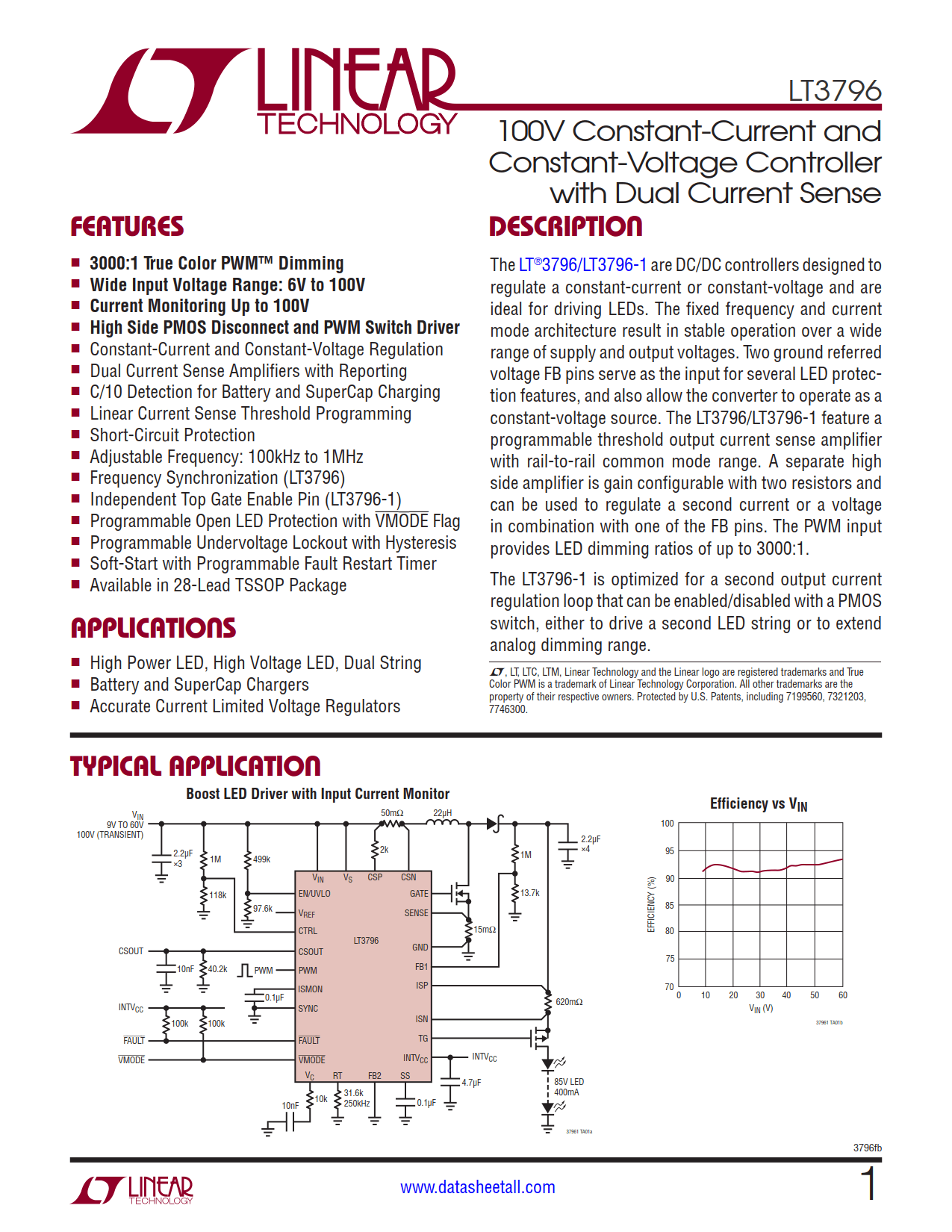
LT3796 Datasheet
100V Constant-Current and Constant-Voltage Controller with Dual Current Sense

100V Constant-Current and Constant-Voltage Controller with Dual Current Sense
| Part No. | In Stock | Price | Packaging | SPQ | Marking | MSL | Pins | Temp Range | Package Description |
The LT3796 are DC/DC controllers designed to regulate a constant-current or constant-voltage and are ideal for driving LEDs. The fixed frequency and current mode architecture result in stable operation over a wide range of supply and output voltages. Two ground referred voltage FB pins serve as the input for several LED protection features, and also allow the converter to operate as a constant-voltage source. The LT3796 feature a programmable threshold output current sense amplifier with rail-to-rail common mode range. A separate high side amplifier is gain configurable with two resistors and can be used to regulate a second current or a voltage in combination with one of the FB pins. The PWM input provides LED dimming ratios of up to 3000:1.
| Part Number | Description |
| LT3755 | High Side 60V, 1MHz LED Controller with True Color 3,000:1 PWM Dimming |
| LT3755-1 | High Side 60V, 1MHz LED Controller with True Color 3,000:1 PWM Dimming |
| LT3755-2 | High Side 60V, 1MHz LED Controller with True Color 3,000:1 PWM Dimming |
| LT3756 | High Side 100V, 1MHz LED Controller with True Color 3,000:1 PWM Dimming |
| LT3756-1 | High Side 100V, 1MHz LED Controller with True Color 3,000:1 PWM Dimming |
| LT3756-2 | High Side 100V, 1MHz LED Controller with True Color 3,000:1 PWM Dimming |
| LT3743 | Synchronous Step-Down 20A LED Driver with Three-State LED Current Control |
| LT3791 | 60V, Synchronous Buck-Boost LED Driver Controller |
| LT3791-1 | 60V, Synchronous Buck-Boost Controller |
| LT3517 | 1.3A, 2.5MHz High Current LED Driver with 3,000:1 Dimming |
| LT3518 | 2.3A, 2.5MHz High Current LED Driver with 3,000:1 Dimming |
| LT3474 | 36V, 1A (ILED), 2MHz, Step-Down LED Driver |
| LT3474-1 | 36V, 1A (ILED), 2MHz, Step-Down LED Driver |
| LT3475 | Dual 1.5A(ILED), 36V, 2MHz, Step-Down LED Driver |
| LT3475-1 | Dual 1.5A(ILED), 36V, 2MHz, Step-Down LED Driver |